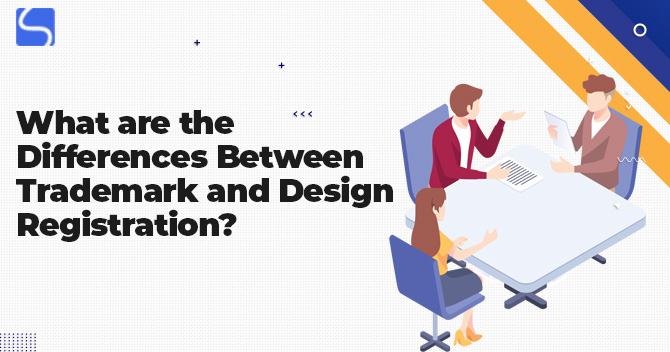What are the Remedies for Design Infringement? – An Overview

Karan Singh | Updated: Dec 31, 2021 | Category: Design
Just like other Intellectual Properties, Design is also an integral part of Intellectual property (IP), and it is too inclined to Infringement. Design Infringement is an illegal act to use or copy a registered design or fraudulent copying of an already registered design without consent from the owner of such a registered design. Any Design owner whose design has been registered already, in such a case, can file a case to recover damages from the infringer and ask the infringer to stop this. That’s why it is vital to know the remedies for Design Infringement so that you can protect your design from any infringers in the future. Scroll down to check different remedies for Design Infringement.
Table of Contents
What do you mean by Design Infringement?
Before we discuss remedies for Design Infringement, let’s understand the meaning of Design Infringement in brief. The original owner of a registered design has the exclusive right; if any 3rd party sells, copies, or manufactures the registered design for commercial purposes and if the 3rd party is not permitted to do so by the registered design owner, such activities lead to Design Infringement.
The details of the right of a registered design are specified in the request submitted in the Design Registration application and the attached drawings. But, because the ambit of a design right extends to the registered design and any similar or identical design, the similarity of a design is an issue for the purpose of Design Infringement.
In making a judgement regarding the similarity of a design, it is common for designs to be considered the same after comparing the two designs and finding resemblance:
- The overall dominant constitution and the precise constitution of both designs;
- The featured of the designs;
- A common foremost constitution in both designs;
- Only a slight difference in both designs is not notable;
According to the Design Act, 2000[1], the piracy of registered design comes under the encroachment of design. Section 22 of the Design Act mentioned that any fraudulent or clear copying of a design that has been registered already without the permission of the owner of the registered owner is illegal. The section also prohibits importing any substance or material, which is in close similarity to a design already registered. An infringement is said to be if any individual, without proceeding with the approval of the original.
Requirements for a Design Protection from Design Infringement
- Design should be unique or new;
- A design shouldn’t have been revealed to the public earlier;
- A design should be considerably differentiated from other known designs or combinations.
What are the Rights of Owner under the Design Act?
- The right to apply for Design Registration in any of the classes in which the design is registered;
- The exclusive right to publish or cause to be revealed or published, any articles in any classes of goods or products in which the design is registered to which such a design is applied;
- The right to import for the purposes of sale of any articles belonging to the classes of goods in which the design is registered & have applied to it.
Remedies for Design Infringement
According to the Design Act, the liability of the one who violates the design is mentioned under Section 22(2) of the Act. It is the same section that provides the remedies for Design Infringement to the registered owner. Hence, the liability of the violating party of the above-mentioned Act is as follow:
- Under Section 22 (2)(a) of the Design Act, the one who violates shall pay Rs. 25,000/- for every violation. The total amount shall sum up to Rs. 50,000. The above amount is for the recovery of the Infringement.
- Under Section 22(2)(b), it is mentioned that the owner of the registered design is covered under certain rights wherein it can call for damage recoveries and make the violating party liable.
For example, in Videocon Industries vs Whirlpool of India Limited, the Bombay High Court arrived at a judgment as to the plan of Section 22 of the Act, which permits actions against “any individual” in this section. A registered design can be abolished, or registration placed aside, or a registered owner can be restrained by order of injunction from practising the use of such design either by High Court following Section 22 of the Design Act or by Controller following Section 19 of the Design Act under the conditions in a case. Suppose a certified owner doesn’t apply for their design to a product for sale or associated with the before-mentioned sale. In that instance, another registered owner cannot have recourse to Section 22 of the Act.
Hence, the remedies for Design Infringement under Section 22 were only available to use disputed design. In Section 22 and sub-section 1 to 3 in distinct, it is shown that the infringement suit of a registered design extends against any individual that would incorporate a registered owner. Hence, a registered owner of a registered design can file a suit for Infringement against the infringers. The reason behind forcing liability upon the violators is to cover for the loss that the registered owner faces. The owner also holds the responsibility to mark all the articles under the registered design to take vital steps in the further process of Design Infringement.
Who can Claim for the Remedies for Design Infringement?
Section 55 of the Copyright Act provides the scope of civil remedies available on the registered work of the owner. It helps to seek remedies, file a suit for injunction against anyone who violates the registered article or work under the Act. The claimant also enjoys the privilege along with profits gained by the violating party upon the infringed or violated design. Any one of the following amongst owners of a registered design, legal heirs, or joint owners can see remedies for Design Infringement.
Therefore, in the matter of Som Distillaries and Breweries Limited vs Carlberg Breweries, in a judgment, the Delhi High Court upheld the maintainability of a composite suit for Design Infringement and passing off. A claimant can join two causes of action:
- Infringement by the defendant of the claimant’s design;
- Passing off by the defendant of the larger trade dress of the claimant’s products or articles.
Conclusion
It is concluded that it is vital to know the remedies for Design Infringement so that the owner can avoid such infringements in future. Any Design owner whose design has been registered already, in such a case, can file a case to recover damages from the infringer and ask the infringer to stop this.
Read our Article:What are the Benefits of Design Registration in India?














